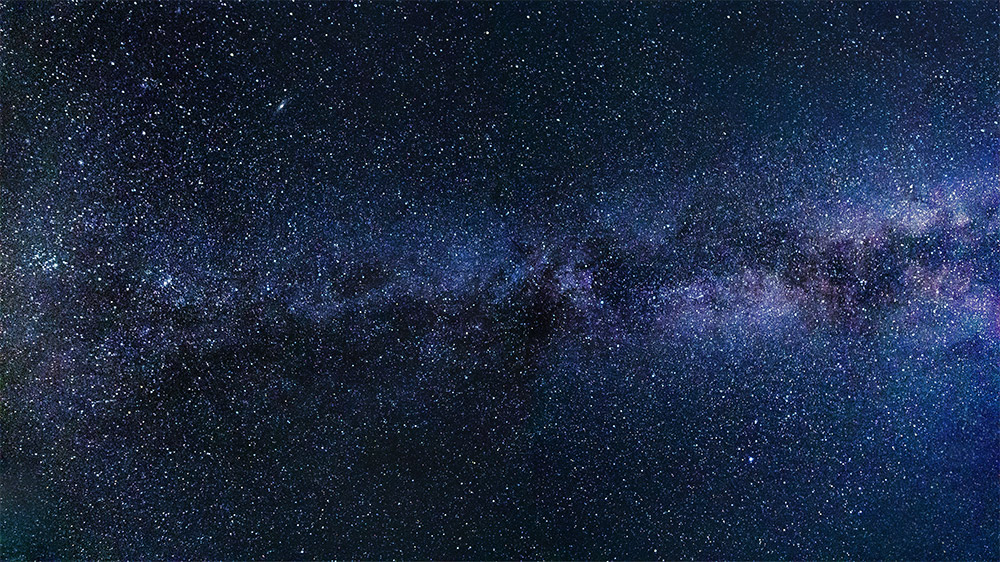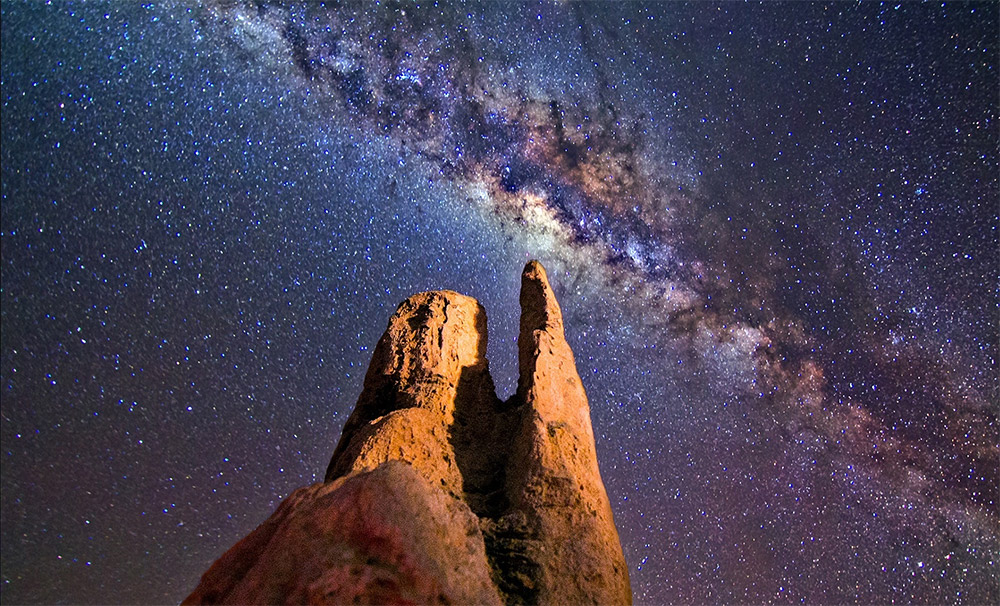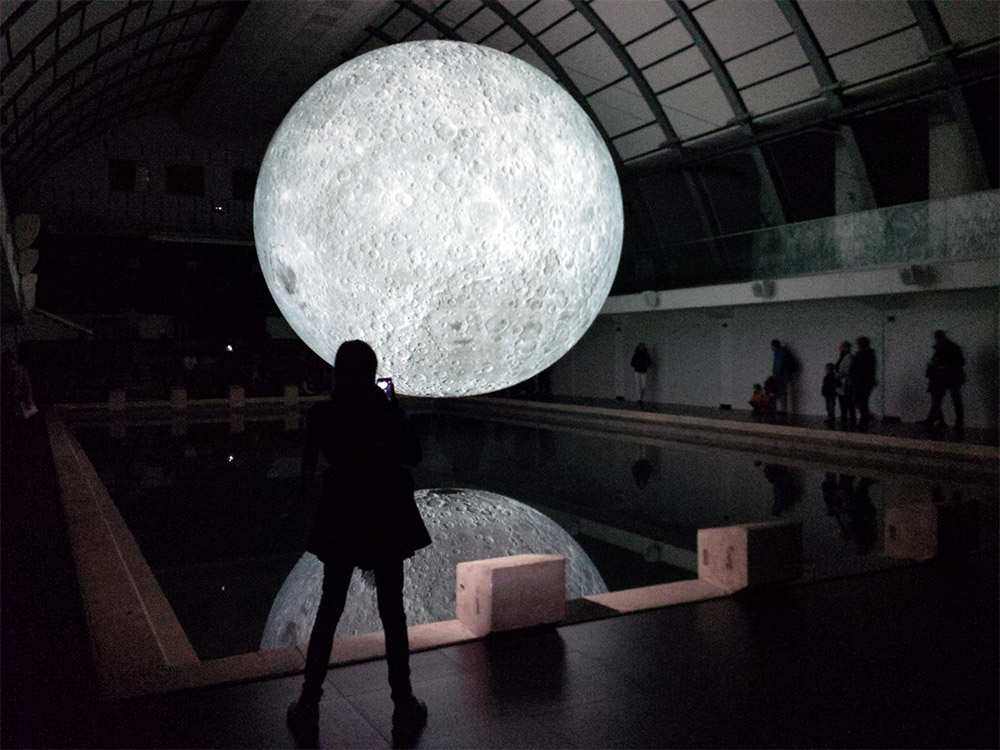Astronomy Basics
What is astronomy?
Astronomy is a natural science. It studies all the objects in the sky such as the Sun, Moon, planets, galaxies, stars, and more. Astronomy analyzes their behavior and phenomena to gain a better understanding of the universe that surrounds us.
The word astronomy comes from the ancient Greek word Astronomia. Astron means “star” and nomos means “law”. So you could say that astronomy means “the laws of the stars”.
If the definition of astronomy seems a bit too wide is because it is. And that is why it is one of the most interesting sciences. Its field of study is huge and there is so much yet to be discovered about the universe.
In short, astronomy is the science that studies all celestial objects.
What is a star?

Stars are giant, luminous spheres of hot gas. They are mostly made out of hydrogen, helium, and other elements in small quantities. All this material is held together by its own gravity, which is so strong that causes the atoms to collide with each other. The result is nuclear fusion, which releases all the energy and light that we see in the sky.
The closest star to Earth is the Sun, which sits at the center of our Solar system.
Stars are at the center of the study of astronomy. They emit light, radiation, and other electromagnetic waves. This allows us to study the other objects in the universe as the light bounces off them.
It takes millions of years for stars to form. They are created when a big cloud of gas and dust has enough mass for the little pieces to start attracting each other through gravity. After a long time, this material starts to collapse under its own gravity and begins to heat up. Forming the core of what will eventually become the star.
Here are some related astronomy basics articles that we have written about stars:
- Difference between sun and star
- Difference between planets and stars
- List of star per constellation
- List of star names by letter
What is a planet?

We know that Earth, Mars, Saturn, etc. are all planets. But what does that mean? Earth is made out of rocky material and it has water on its surface while Jupiter is one big ball of gas. Venus has a thick – although highly toxic – atmosphere, but Mercury doesn’t even have an atmosphere. So why are they all called planets?
What is a planet?
A planet is a spherical object that orbits a star and has cleared any other object of a similar size from its orbit. All those three criteria (spherical, orbits a star, has cleared its orbit) are important because they help remove any doubts about objects that in the past might have been considered planets. Most notably, Pluto, which doesn’t meet the requirements of having cleared its orbit.
When you think about it. The 3 requirements for a planet to be classified as such are related to gravity.
- Planets are spherical (or spheroidal to be more precise) because gravity shapes the mass of large objects into a spherical shape.
- Planets orbit a star because the gravity of the star has “captured” them and stops them from wandering aimlessly in space.
- Planets clear their orbit by capturing smaller objects in their gravitational field. Sometimes that results in a collision and sometimes that results in satellites, like our Moon.
This means there can be many types of types with unique characteristics. For example, Jupiter and Saturn are made out of gas while Earth or Mars have solid, rocky surfaces.
The definition of what is a planet has evolved over the years. The latest significant change was made in 2006 when Pluto, which was previously considered a planet was demoted to the status of dwarf planet
Dwarf planets
A dwarf planet is an object that meets the first two requirements to be a planet (large enough to be spherical and orbits around a star) but doesn’t meet the third one (orbital dominance).
There are five dwarf planets in the solar system: Pluto, Ceres, Makemake, Haumea, and Eris. Some of them, like Eris, even have their own small moons.
There are other objects that are candidates to be classified as a dwarf planet but they are too small and located too far away from Earth for us to be able to get enough information about them. Some of them are Orcus, Quaoar, Gonggong, and Sedna.
Learn more
Here are some astronomy for beginners articles about planets that might interest you.
- Pink planets in the universe
- Venus and Earth differences and similarities
- What is the most beautiful planet?
- What planets can humans walk on?
Other basic astronomy terms
Asteroid – Objects made of rock and metal that orbit around a star. They are not big enough to be considered planets but some of them can be as big as a small country.
Black holes – Regions with so much mass that nothing can escape their gravitational pull. They are formed out of the remnants of a collapsed star.
Comets – Small blocks of ice and dust that orbit around a star. More about comets in: comets explained and a list of named comets.
Constellation – A group of stars that sort of form a particular shape when seen from Earth. Constellations aren’t really established regions or celestial objects. They were grouped and cataloged arbitrarily by how they appeared from Earth’s surface.
Dark matter – Dark matter is hard to explain as even scientists don’t fully comprehend it yet. It is a material all around the universe that we can’t see or detect, but we know about it because of its gravitational effect on other objects.
Galaxy – A disc made out of many stars orbiting a black hole. A galaxy can contain millions of stars and star systems. Earth (and the Solar system) are located in the Milky Way galaxy.
Gravity – It is one of the fundamental forces in the universe. It is a “pull” that all matter has over other matter. Everything in the universe has a gravitational effect over other objects. The more mass the object has the greater is its gravity. For example, your body has a gravitational effect, but it is so small that you don’t go around pulling objects to yourself as you walk.
Light year – The distance that light travels over one Earth year. It is important to note that it measures distance, like miles or meters, and not time even though it has the word “year” in it.
Meteor – A piece of rock, ice, or debris that enters Earth’s atmosphere. Most meteors burn up and are destroyed as they enter because of the heat that is generated.
Meteorite – A meteor that survived the atmosphere and landed on Earth.
Moon – Earth’s natural satellite that orbits around it. Strictly speaking, only our moon is called that, but the term is colloquially used to refer to any of the other planet’s satellites. i.e. Saturn’s moons.
Solar system – The group formed by the Sun and all the planets, asteroids, and other objects that orbit around it. The term is also used to refer to systems around other stars although the correct term for those would be simply star systems.
Supernova – An explosion of a massive star. Supernovas can leave behind neutron stars, black holes or they can be completely destroyed.
Learning Astronomy for Beginners

How to start learning astronomy
Astronomy is a vast field. There are people that spend their whole lives studying it and still don’t know everything there is to know. Astronomy, for beginners, can seem a bit intimidating.
Luckily when you want to get started learning astronomy there are many resources at your disposal. From free online resources to paid courses and books. You can choose your own adventure.
My personal recommendation if you want to get into astronomy as a hobby is to simply start stargazing.
What is stargazing?
Stargazing means observing the stars and other objects in the sky as a hobby. You do not necessarily need a telescope for this. You can simply go out at night and start by learning to identify the brightest stars, then the constellations, and in places with the right sky conditions, you can even get to see a couple of deep space objects like the Orion nebula.
As you learn more and more about these stars, you will naturally start to ask questions about them. How far are they? Why are they only visible at certain times and seasons? Why do some seem to have different colors?. This will organically lead you to delve deeper into the subject and find out more topics that you find interesting so you can research them.
We have some guides on how to find some constellations to get you started. Most of the methods described in that series do not require a telescope. We also have an article on how to get started with astronomy without a telescope that you might find useful.
Choosing a stargazing spot
There are some considerations to choose the ideal spot for stargazing.
Your location is going to play an important part on how many stars and how clearly you can see them.
Big cities are not ideal spots for stargazing because of light pollution. Light pollution is the effect created by all the city lights in the sky. It reduces the amount of stars that can be seen. This is why you see more stars in the sky in rural areas.
Using a telescope helps you see stars even with light pollution, but it still affects your viewing experience and reduces the amount of objects you can see. This is why astronomers like to go on camping trips to get the best views and is the same reason why observatories are built in secluded areas.
Weather conditions
Clouds are also an important factor to get the best stargazing experience. Clear skies are ideal and pretty much necessary for this hobby.
This is one of the reasons why it is a bit of a seasonal activity. Rain season is the worst time of the year for astronomers.
This is also why observatories are built in places that don’t see much rain or clouds, like in the middle of deserts.
Astronomy as a career

Is astronomy hard?
At a professional level, astronomy is hard. It involves a lot of mathematics, physics, and data analysis. It requires discipline and focus. Astronomy is one broadest natural sciences because it studies a lot of different things so there’s always something new to discover and learn.
But don’t let that discourage you because it is also one of the most rewarding things you can dedicate yourself to. Discovering new things that can change the way we understand the universe is extremely exciting. If that is the kind of thrill you are looking for in a career, then astronomy could definitely be for you.
Now, taking up astronomy as a hobby is very different.
In that case, you aren’t obliged to learn anything you don’t want. If you just want to watch the sky and learn the names of the stars and galaxies, that’s ok, and its not going to require any technical knowledge on your part.
Astronomy branches
Astronomy is such a big field of study that it has its own specializations. Here are the key astronomy branches.
- Astrophysics
- Cosmology
- Spectroscopy
- Photometry
- Heliophysics
- Helioseismology
- Asteroseismology
- Astrometry
- Planetology
- Exoplanetology
- Astrogeology
- Areology
- Selenography
- Exogeology
- Astrobiology
- Exobiology
- Astrochemistry
Astronomy universities
If you are looking to get into astronomy formally as a career instead of simply a hobby there are many options.
Plenty of universities in the US, Canada, and Europe offer astronomy majors.
The most renowned colleges with astronomy majors in the US are:
- Princeton
- Harvard
- Columbia
- California Institute of Technology
- University of Chicago
- Brown
- Yale
- Rice
- Cornell
- Michigan
- Carnegie Mellon
- University of Virginia
In Europe, these universities have either astronomy or astrophysics departments
- Cambridge (UK)
- Oxford (UK)
- Durham (UK)
- University of Leicester (UK)
- University of Edinburgh (UK)
- Leiden University (Netherlands)
- University of Amsterdam (Netherlands)
- Paris Diderot University (France)
- University of Liege (Belgium)
- Heildelberg University (Germany)
- University of Padua (Italy)
- University of Geneva (Switzerland)
In Canada, astronomy is taught at the following universities:
- University of Alberta
- Athabasca University (Alberta)
- Brandon University
- University of British Columbia
- Astronomy University of Calgary
- Guelph University
- Laval
- University of Manitoba
You can find more details on the Royal Astronomy Society of Canada website.
Telescopes for beginners

While it is not necessary to get a telescope to start learning astronomy, at some point in your journey you will most likely want to get one. Telescopes have many uses in astronomy. Check out this article on what is a telescope used for? to better understand how one can accelerate your knowledge of the subject.
Buying a telescope as a beginner can be intimidating. If you just go by price as an indicator of quality you will be extremely confused because you will find that telescopes of similar sizes can vary wildly in price.
Because of this, learning at least the basics about what the tech specifications mean will help you make a more informed decision.
Telescope types
There are many types of telescopes that are classified based on their design and whether they use lenses or mirrors.
As a beginner, your decision will be generally between the three most popular types of telescopes. Refractors, Newtonians (also known as reflecting telescopes), and compound telescopes.
We have written in depth about the differences, pros, and cons of each in our guide on telescope types but here’s a quick version.
- Refractors – The most classic design you picture in your mind when you think about a telescope. Refractors use 2 lenses. One to capture the image, one to reflect it and that’s it. They are easy to use and don’t require maintenance and are great for starters. They are only found in small sizes as the lenses are expensive to manufacture.
- Newtonian / reflectors – Newtonians are a very popular choice for beginner astronomers. They use mirrors instead of lenses which means they can be manufactured in larger sizes for cheap. They also fix a few optic errors that cheaper refractors tend to show. The main disadvantage is they require maintenance and have shorter focal lengths making them slightly worse for viewing planets (but better for galaxies and deep space objects).
- Compound – Also known as Cassegrain telescopes, compounds use a combination of both mirrors and lenses. They are compact, offer excellent optics, and are the most modern design out of the three. They require a little bit of maintenance but not as much as Newtonians. Their main disadvantage is their price as they are the most expensive of the bunch.
It is hard to give a definitive recommendation as to which type of telescope is best for beginners because they all work. For kids, I’d give a slight edge to refractors as they are basically “point and shoot” and some are small and light enough for children to be able to set them up without help.
For adults starting in the hobby, I’d recommend starting with a Newtonian for backyard astronomy. But if you plan to take it often on camping/stargazing trips check this guide on the best travel telescopes.
How to choose your first telescope
The most important thing you have to look at when choosing your first telescope is the aperture.
The aperture is the most important number in any telescope. It refers to the size of the front lens and it is going to determine the maximum amount of light the telescope can capture.
If you are only looking to maximize performance, every other spec of the telescope is secondary. Always go with the largest aperture your budget allows for.
Small note: All the specifications for a telescope are usually listed in the metric system (millimeters, kilograms, etc). If you live in the US, this might be a good time to get comfortable with the inches to mm conversion.
The exceptions to the rule come when you are looking into telescopes for specific purposes, for example traveling or astrophotography. In the case of portable scopes, you will have to look into the weight and size as important factors.
Here’s a longer aperture explaining telescope apertures and a comparison between different telescope apertures if you want to learn more.
An image is worth a thousand words. It’s hard to know what to expect out of a telescope just by looking at numbers. Check out our guides with photos of what you can expect to see in a telescope of different apertures.
- What to expect from 70mm telescopes
- What to expect from 100mm telescopes
- What to expect from 130mm telescopes
The second most important feature of a telescope is the focal length. This is the distance the light travels inside the tube of the device. It is going to determine things like the field of view (the area of space you get to see in the image) and how “fast” the telescope is which is important for astrophotography.
Long focal lengths perform better when viewing planets and the Moon while short focal lengths work better for deep space objects (galaxies, nebulas, etc). The difference might not even be noticeable for beginners, but it’s something to consider if you are planning to target specific objects.
Choosing a telescope for kids
We have multiple guides on how to choose telescopes for specific ages and needs. Check out the following articles with our recommendations.
Telescope basics
The following articles cover some of the most common questions about telescopes that we get from readers.
- Can you leave a telescope outside?
- How to store a telescope
- Can you use a telescope indoors?
- What is a Barlow lens?
- How to upgrade a telescope
- How to take photos with a telescope
How to find objects with a telescope
Ok, you have a telescope. Now what? How do you actually find the object you want to look at in the vastness of the night sky?
Well, you have multiple options.
Some people enjoy learning to “star hop”. This means finding stars or galaxies by “hopping” from one star to the next using prominent stars or shapes as starting points and following imaginary lines or angles to move around.
For example, in Winter, Orion’s belt is very easy to distinguish just by looking at the sky. If you trace an imaginary line that goes across its 3 stars and extend it, it points almost exactly in the direction of Aldebaran. That is the brightest star in the Tauros constellation. So now you have used a star formation to find another constellation. That is star hopping.
The previous example is a very simple one. To locate some objects things get more complicated as not all of them are near a recognizable shape or star.
If that’s something you’d like to learn to do, we have a series of articles on how to find some constellations. Each of them includes one or various methods to find them by star hopping. Here are some examples:
Aries – Taurus – Gemini – Cancer – Leo – Virgo – Libra – Scorpius – Saggitarius – Capricornus – Aquarius – Pisces
There are people who think star-hopping is too tedious and requires too much memorization and they just want to skip to watching the object they want to see. In that case, you can use star maps.
Star maps show all the objects in the sky based on the date and time and they simply tell you in what direction or area you need to point your telescope at.
These days most star maps are simply smartphone apps. But in the old days, they were printed and some old-school enthusiasts still prefer using those.
There is no right or wrong way to go about learning to locate objects in the sky. In fact, there is no right or wrong way to go about learning astronomy as a beginner. The point is to have fun and enjoy this incredible hobby at your own pace.

